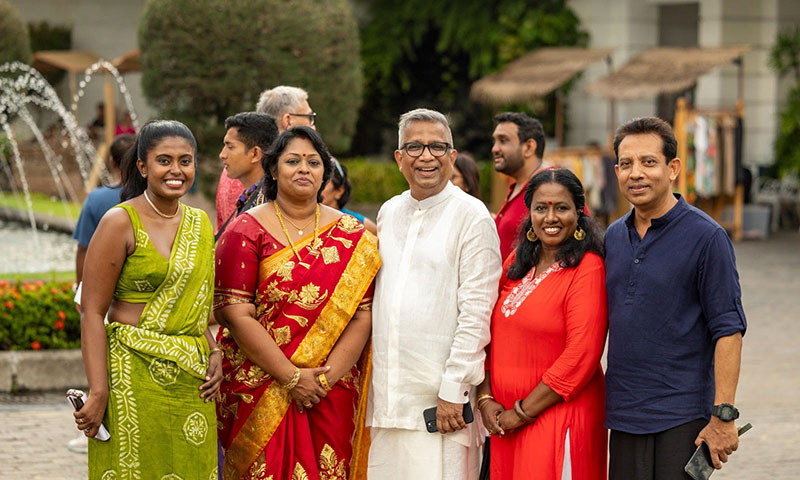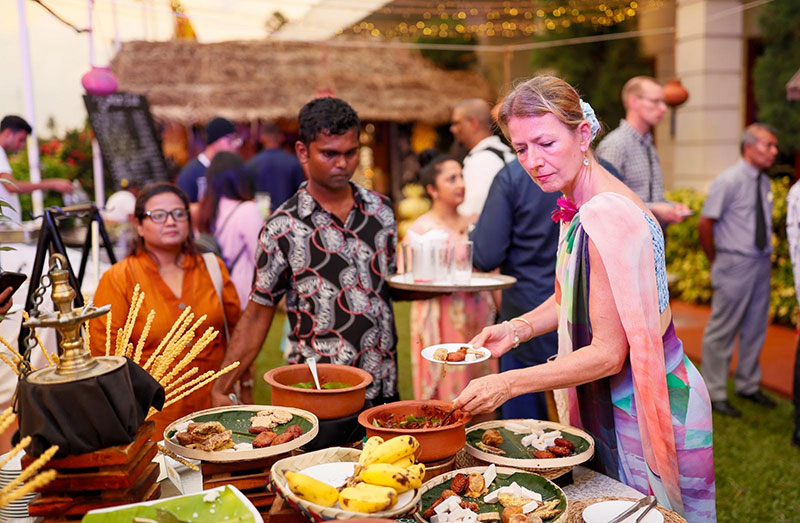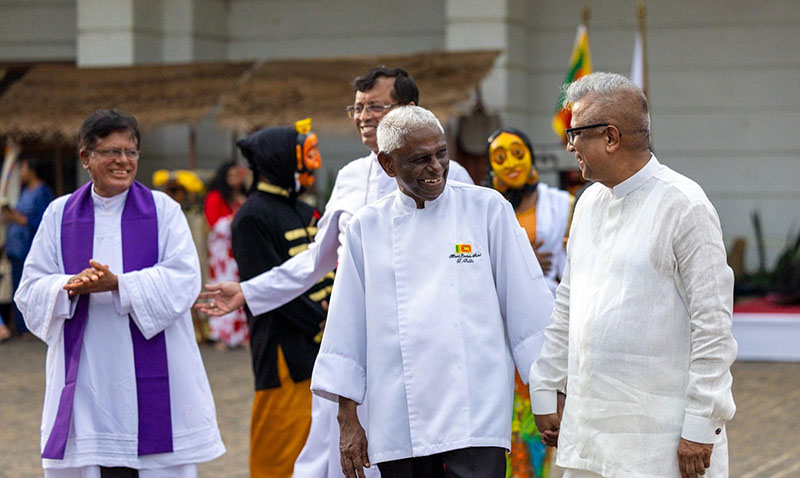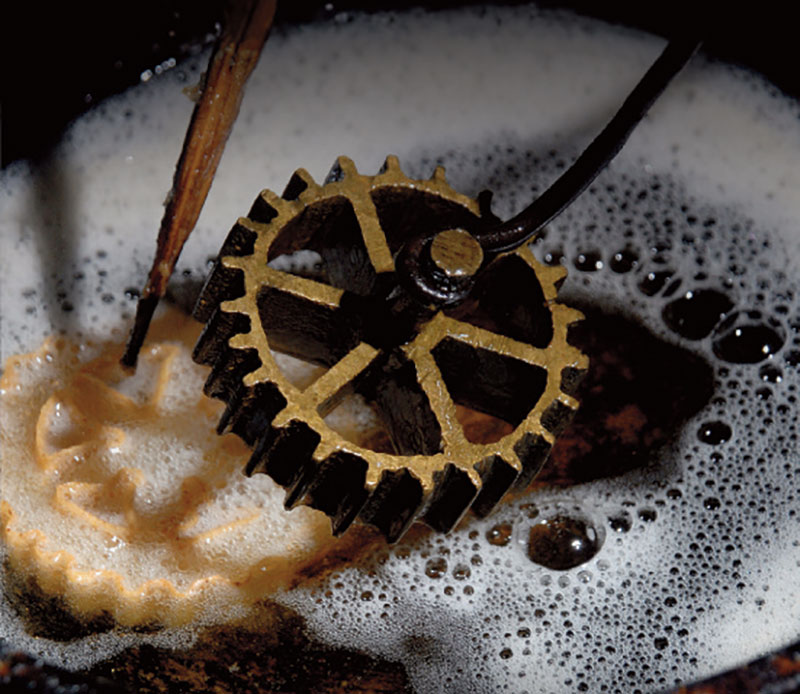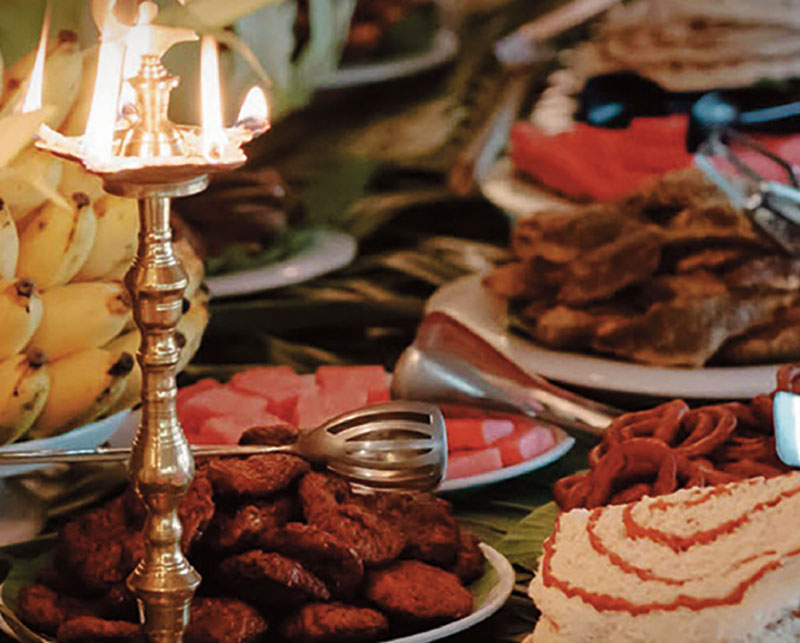Life style
The truth about Japanese tempura
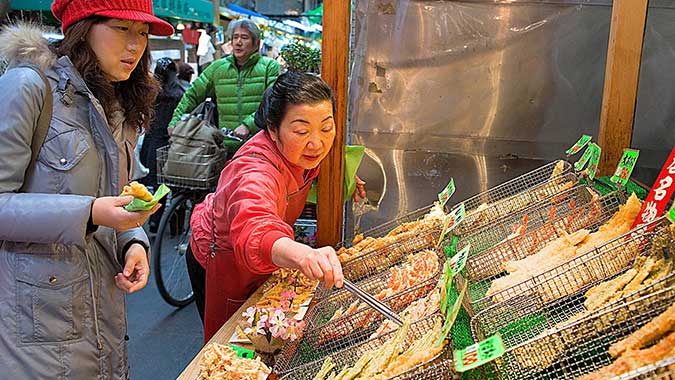
When 16th-Century Portuguese came to Japan, they brought a special dish with them. Today, in Japan, it’s called tempura and has been a staple of the country’s cuisine ever since.
In 1543, a Chinese ship with three Portuguese sailors on board was headed to Macau, but was swept off course and ended up on the Japanese island of Tanegashima. Antonio da Mota, Francisco Zeimoto and Antonio Peixoto – the first Europeans to ever step on Japanese soil – were deemed ‘southern barbarians’ by the locals because of the direction from which they came and their ‘unusual’, non-Japanese features.
The Japanese were in the middle of a civil war and eventually began trading with the Portuguese, in general, for guns. And thus began a Portuguese trading post in Japan, starting with firearms and then other items such as soap, tobacco, wool and even recipes.
The Portuguese remained in Japan until 1639, when they were banished because the ruling shogun Iemitsu believed Christianity was a threat to Japanese society. As their ships sailed away for the final time, the Portuguese left an indelible mark on the island: a battered and fried green bean recipe called peixinhos da horta. Today, in Japan, it’s called tempura and has been a staple of the country’s cuisine ever since.
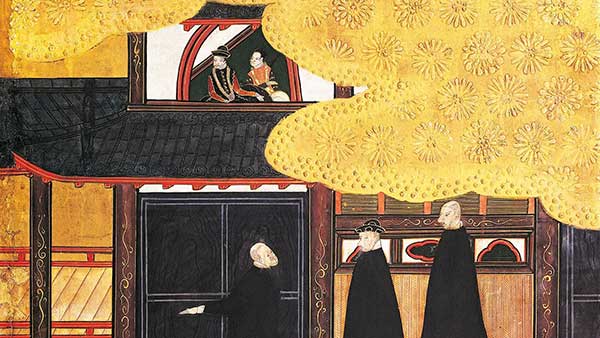
No-one knows the exact origins of peixinhos da horta. “We know it existed in 1543,” said Michelin-starred chef Jose Avillez when I met up with him at Cantinho de Avillez, one of his acclaimed Lisbon restaurants. “But before that, it’s anyone’s guess.”
Green beans, it turns out, changed food history.
However, peixinhos da horta was only one of many dishes the Portuguese inspired around the world. In fact, Portuguese cuisine, still heavily overshadowed by the cuisines of Italy, Spain and France, may be the most influential cuisine on the planet.
Portuguese cuisine may be the most influential cuisine on the planet
When the Portuguese turned up in Goa, India, where they stayed until 1961, they cooked a garlicky, wine-spiked pork dish called carne de vinha d’alhos, which was adopted by locals to become vindaloo, one of the most popular Indian dishes today.
In Malaysia, several staples, including the spicy stew debal, hail from Portuguese traders of centuries past. Egg tarts in Macao and southern China are direct descendants to the egg tarts found in Lisbon bakeries. And Brazil’s national dish, feijoada, a stew with beans and pork, has its origins in the northern Portuguese region of Minho; today, you can find variations of it everywhere the Portuguese have sailed, including Goa, Mozambique, Angola, Macau and Cape Verde.
Peixinhos da horta were often eaten during Lent or Ember days
(the word ‘tempura’ comes from the Latin word tempora, a term referring to these times of fasting), when the church dictated that Catholics go meatless.
“So the way around that,” Avillez said, “[was] to batter and fry a vegetable, like the green bean. And just to add to it, we called it peixinhos do horta, little fish of the garden. If you can’t eat meat for that period of time, this was a good replacement.”
The word ‘tempura’ comes from the Latin word tempora
And it had other functions too. “When the poor couldn’t afford fish, they would eat these fried green beans as a substitute,” Avillez said. And sailors would fry the beans to preserve them during long journeys, much in the way humans have been curing and salting meat for preservation purposes for centuries.
Perhaps not constricted by tradition, the Japanese lightened the batter and changed up the fillings. Today, everything from shrimp to sweet potatoes to shitake mushrooms is turned into tempura.
“The Japanese inherited the dish from us and they made it better,” Avillez said.
Avillez said Japanese people sometimes turn up at his restaurants and see the fried bean dish and say, “Hey, Portuguese cuisine is influenced by Japanese cuisine.” He added, “And that’s when I say, ‘No, in this case it’s the other way around’.” A Japanese-born sous chef at Avillez’s two-Michelin-starred Lisbon restaurant, Belcanto, even chose to train in Portugal instead of France because he recognized the influence on his home cuisine, particularly in peixinhos da horta.
Avillez said his one complaint about the dish, in general, has always been that the beans are often fried in the morning and so they go cold and limp by the time they get to the table later that day. He remedies this by not only cooking them on demand, but by adding a starch called nutrios that keeps them crispy. After the bean is blanched, it gets rolled in the batter of wheat flour, egg, milk, and nutrios and then flash fried.

Other chefs I talked to in Portugal had their own recipes for the fried green beans, but they didn’t deviate much. “It’s a very simple dish,” said chef Olivier da Costa, when I met up with him at his Lisbon restaurant Olivier Avenida, located in the Avani Avenida Liberdade hotel.
“I use a batter of flour, milk, eggs, salt, pepper and beer,” he said. “Beer?” I asked. “Yes! It ferments the batter and the beer foam gives it a better taste.” He didn’t have the dish on his menu at the time so I had to take his word for it.
One reason why Portuguese love peixinhos da horta so much, da Costa said, was nostalgia. “We all eat it as children and thus have fond memories of it. These days it’s been making a comeback, not just because people are eating more vegetarian food, but because a younger generation are taking more interest in our local cuisine and because they want to be taken back to that simpler time.”
Avillez is taking this newfound interest in super traditional Portuguese cuisine to a new level. Along with his Japanese-born sous chef, he plans to temporarily offer a tasting menu called ‘1543’, the year the Portuguese first showed up in Japan, offering peixinhos da horta and other Portuguese dishes that have inspired Japanese cuisine. Alongside the Portuguese dishes, he plans to serve the Japanese versions that evolved from the Portuguese presence in Japan four-and-a-half centuries ago.
Each bite was like taking a first bite
Back at Cantinho de Avillez, an order of peixinhos da horta appeared in front of me. They were rigid like pencils with a lumpy texture and a yellow-ish hue. Each bite was like taking a first bite: crisp, light and super flavourful, the crunchy texture of the batter complimenting the sturdy feel of the bean. The dish has been one of the only consistent items on the menu at Cantinho de Avillez, which opened in 2012.
“I can’t take it off,” Avillez said. “My regulars would be enraged.” (BBC)
Life style
Mount Lavinia Hotel unveils spectacular “Avurudu Maha gedara”
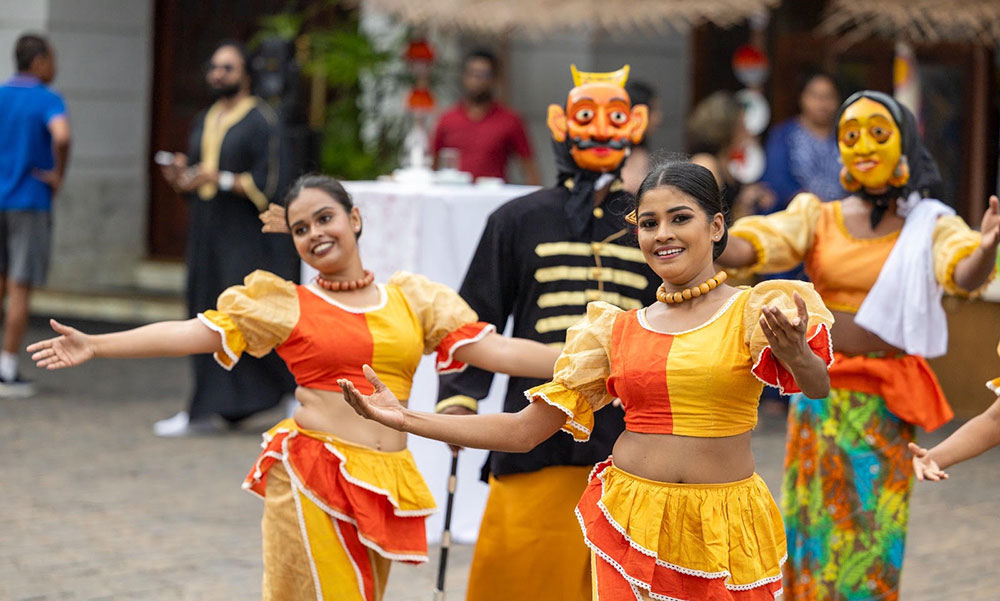
Mount Lavinia Hotel, known as “Galkissa Maha Hotalaya had thier “Avurudu Maha Gedara” celebration for the 2025 Sinhala and Tamil New Year. This year’s festivities were spectacular, with the iconic Chef Publis Silva at the helm of the culinary offerings.
The concept of “Avurudu Maha Gedara” – the grand ancestral home where families gather during New Year – perfectly embodies Mount Lavinia Hotel’s role as a cultural cornerstone in the community. Just as in the traditional village “Maha gedara” welcomes extended families, the historic hotel opens its doors to all Sri Lankans and visitors wishing to experience authentic New Year traditions.
“Avurudu Maha Gedara at Mount Lavinia Hotel is more than just a celebration – it’s our way of preserving and sharing Sri Lanka’s rich cultural heritage,” says Anura Dewapura, Chief Operating Officer of Mount Lavinia Hotel Group. “We take pride in creating a space where families and friends can come together to experience the joy and traditions of the New Year in an authentic setting that honors our collective past while creating new memories.”
Grand Kavili Kade opening and Avurudu market
The celebrations kicked off with the grand opening of the Kavili Kade (sweetmeat shop) on Sunday, April 6th at 4:30 PM. Visitors were treated to a vibrant cultural spectacle featuring traditional dancing, music, games, and dramatic performances. Distinguished guests including corporate partners, business associates, ambassadors, and media representatives attended this colorful inauguration.
The hotel’s courtyard was transformed into an eco-friendly Avurudu Market, showcasing special New Year items, homeware, and decorative pieces. Following the grand opening, the Kavili Kade will welcome guests daily from 10 AM to 8 PM until April 13th.
Exquisite Kavili hampers
For those looking to bring the flavors of Avurudu home, Mount Lavinia Hotel has curated three distinctive kavili hampers named after beloved Sri Lankan flora:
The premium Erabadu Hamper – the most comprehensive sweetmeat collection
The Ehela Hamper – a delightful mid-range offering
The Bakmee Hamper ) – a perfect introduction to traditional treats
Each hamper can be delivered directly to your doorstep, making them ideal both for family celebrations and as meaningful gifts during the New Year season.
“Feast of the Nation” – A Culinary Journey Across Sri Lanka
On Avurudu Day, Mount Lavinia Hotel will host its renowned “Feast of the Nation” lunch buffet, celebrating Sri Lanka’s diverse culinary heritage. At , this extraordinary buffet transcends ethnic boundaries, offering a comprehensive journey through the island’s rich culinary landscape. The feast features authentic dishes from every corner of Sri Lanka, bringing together the distinct flavors and cooking traditions that represent the country’s multicultural identity in one magnificent spread.
“The Avurudu celebration at Mount Lavinia Hotel represents the true spirit of Sri Lankan unity,” Dewapura continued. ” Through our traditional foods, we honor the cultural tapestry that makes our nation so special.”
Mount Lavinia Hotel’s “Avurudu Maha Gedara” welcomes Sri Lankans of all ages and backgrounds to experience the rich traditions of the New Year in the magnificent setting of this historic landmark.
For reservations and inquiries, contact Mount Lavinia Hotel at 0112 711 711.
Life style
Celebrate Avurudu in grand style
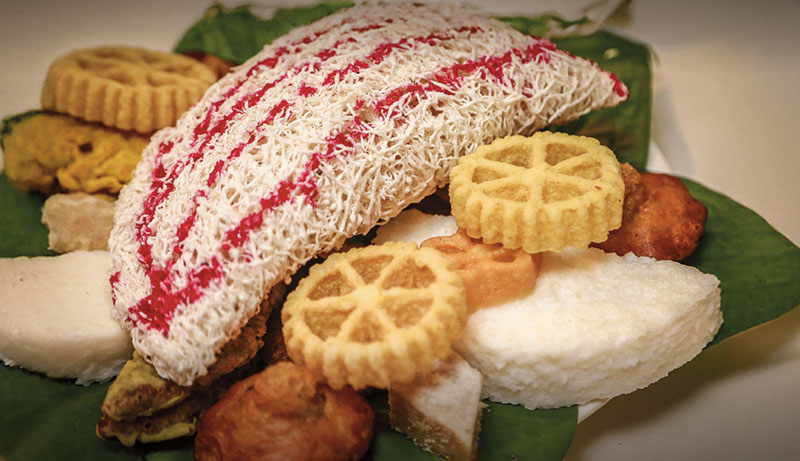
This April, Cinnamon Grand Colombo brings the joyous essence of Avurudu alive with a line-up of delightful culinary experiences, cultural festivities, and memorable moments for the whole family. Here’s how you can celebrate the Sinhala and Tamil New Year with flavour, tradition, and warmth said the press release.
New Year vibes
The release said experience the sights, sounds, and smells of a truly Sri Lankan New Year from 12–15 April 2025, starting from 5 PM onwards at the Lobby.
Watch live demonstrations of traditional sweetmeats being made, like kawum and kokis, and enjoy the rhythmic beats of raban drums as the hotel lobby transforms into a celebration of Avurudu culture.
Lobby – Cinnamon Grand Colombo
12–15 April, from 5 PM onwards
Call +94 11 247 3494 for details
Celebrate Avurudu Tradition and taste at Nuga Gama
On 14 April 2025, step into a truly authentic village-style Avurudu celebration at Nuga Gama. Starting at 8 AM, guests can enjoy a lavish Kavili Table and Lunch Buffet filled with traditional sweets and festive Sri Lankan dishes.
There’ll also be Avurudu games and vibrant activities to keep the whole family entertained.
Life style
Celebrate Sinhala and Tamil New Year at Sun Siyam Pasikudah’s Festival of the Sun
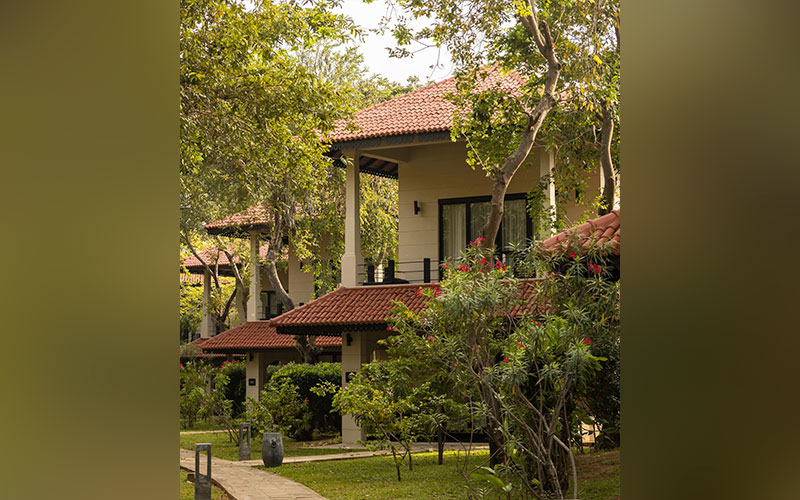
This Sinhala and Tamil New Year, step away from the ordinary and embrace the spirit of Avurudu at Sun Siyam Pasikudah with the joyous rhythms of tradition, community, and coastal serenity, under the vibrant theme, Festival of the Sun said a press release
Set along the golden shores of Pasikudah, the luxury five-star beach resort transforms into a festive haven where timeless rituals meet joyful recreation. From traditional ceremonies to fun-filled family games, guests are promised an unforgettable experience that captures the heart of Sri Lankan heritage, celebrating the essence of togetherness, gratitude, and renewal release said.
As the sun rises to mark the dawn of the New Year, guests will witness the symbolic milk boiling ceremony—a sacred ritual signifying prosperity and new beginnings. The preparation of the Kavili Mesaya, or traditional sweet table, will follow—featuring a colourful spread of mouthwatering Avurudu treats like kokis, mung kavum, aluwa, and konda kavum. The celebration continues with a ceremonial oil lamp lighting, setting the tone for a day rooted in cultural elegance and island warmth.
The Kids’ Corner is all set to light up with playful delights such as Breaking Balloons and Placing the Eye on the Elephant, promising giggles and memories for the little ones. Families and groups can bond over light-hearted yet lively games including Fill the Bottle by Hand, Sack Races, and the ever-popular Musical Chairs—guaranteed to spark friendly competition and lots of laughs.
For those seeking a thrill, competitive events like Tug of War (Ladies vs Gents), Pillow Fight, and the classic Blindfolded Pot Breaking are sure to bring out the festive spirit in full force.
While the Avurudu festivities steal the spotlight, Sun Siyam Pasikudah continues to charm guests with its signature blend of tropical luxury and authentic Sri Lankan hospitality.
-

 News4 days ago
News4 days agoSuspect injured in police shooting hospitalised
-

 Features5 days ago
Features5 days agoRobbers and Wreckers
-

 Features7 days ago
Features7 days agoSri Lanka’s Foreign Policy amid Geopolitical Transformations: 1990-2024 – Part III
-

 Midweek Review7 days ago
Midweek Review7 days agoInequality is killing the Middle Class
-

 Business4 days ago
Business4 days agoSanjiv Hulugalle appointed CEO and General Manager of Cinnamon Life at City of Dreams Sri Lanka
-

 Business6 days ago
Business6 days agoNational Anti-Corruption Action Plan launched with focus on economic recovery
-

 Features3 days ago
Features3 days agoLiberation Day tariffs chaos could cause permanent damage to US economy, amid global tensions
-

 News7 days ago
News7 days agoIChemC signs MoU with KIIT, India


